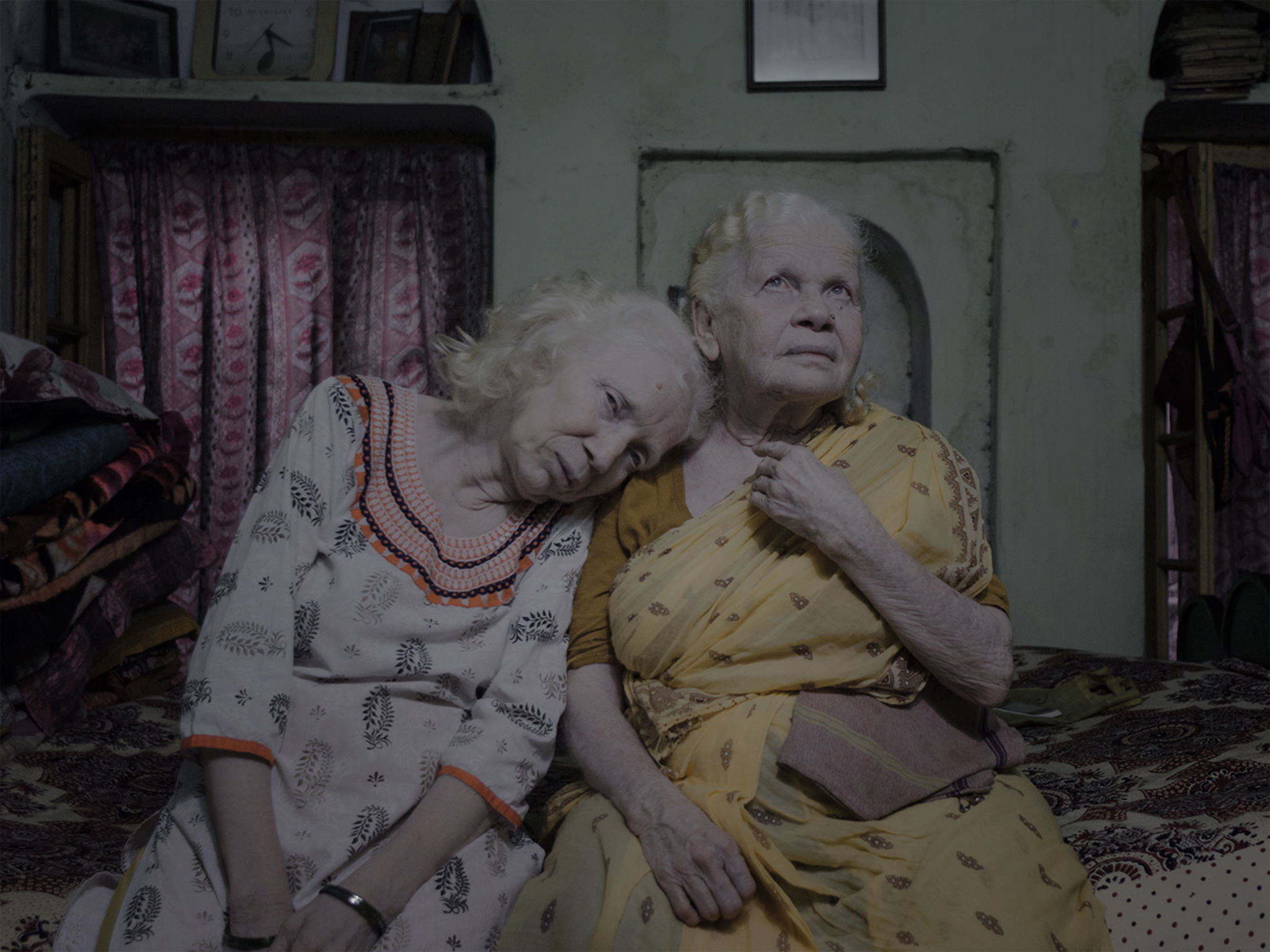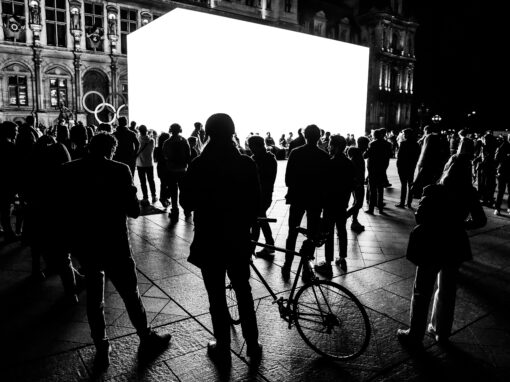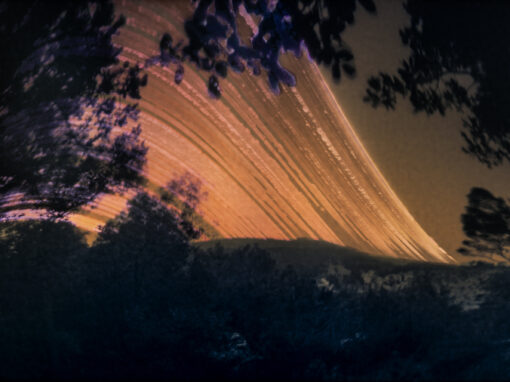It really doesn’t matter how often I look.
There is something about the portrait which, when done well, transcends documentation. There’s something about the portrait which, in the hands of somebody who knows what they’re doing, can begin to illuminate something of the soul. We study the face, the expression, the posture, and wonder what dreams and disasters rest inside that unique personal history. It’s not new, but always worth repeating, to say that when we look at portraits we see the other and we see ourselves.
“Crossroads”, by Debsuddha Banerjee
Published by Editions Images Vevey, 2024
Review by W. Scott Olsen
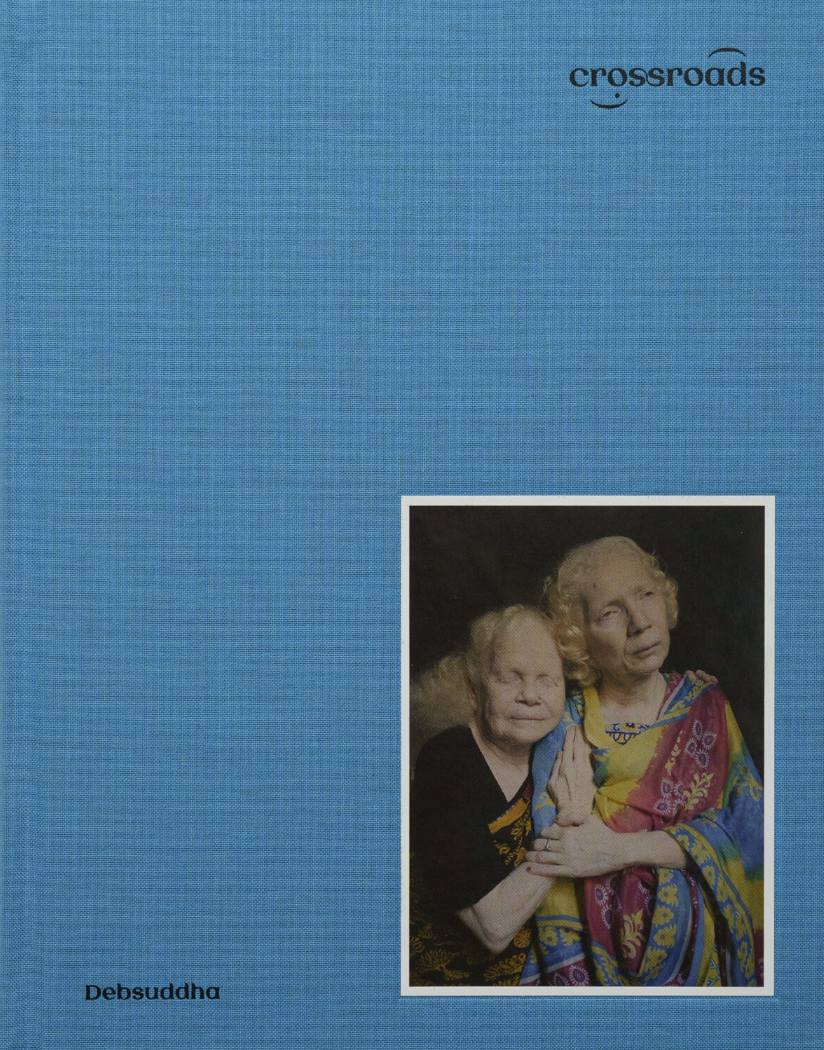
This is exponentially true with a portrait series. To be clear, a portrait series is usually not just a series of candid shots. Often, a series is as staged, as posed, as carefully lit as any single shot. But the series is an imagined narrative, a constructed narrative, a narrative that is made for the intent of getting at something about not only the implications of a person’s visual demeanor, but something about the arc of their life, something about the quality, the nuances of their days.
We often see this with subjects that are somehow outside statistical averages. Their lives are as mysterious to us as Martians, and the portraits get after not only their visual presence, but the ethos, the atmosphere, the pathos, perhaps something true about simple things like love and hope.
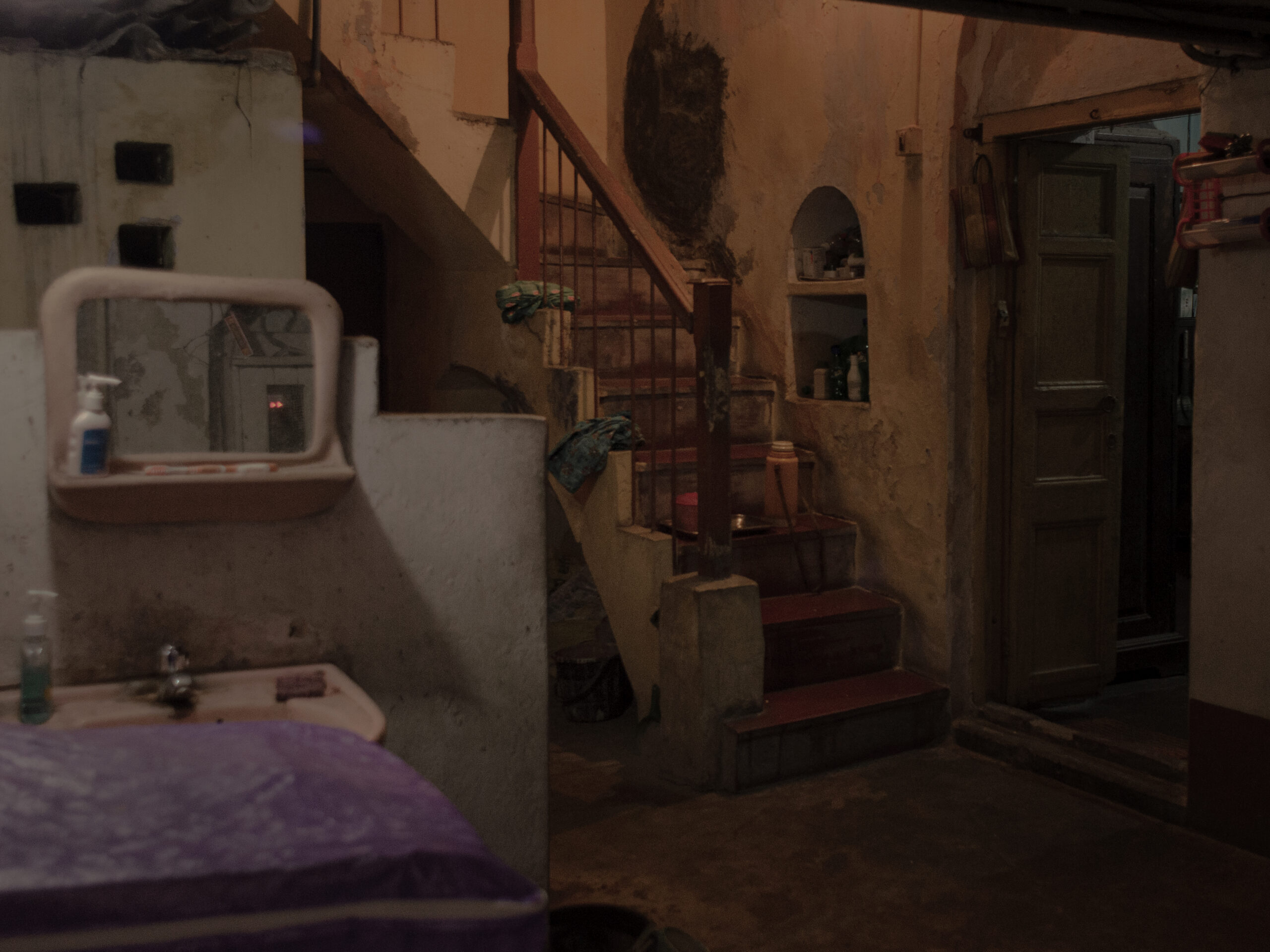
Photographic portraiture is a difficult art. It’s easy to be competent, but challenging to get inside the surfaces. There has to be some type of connection, no matter how fleeting, between subject and artist. I’m holding on my desk today a book called Crossroads, by Debsuddha Banerjee. The book is a haunting and beautiful portrait series—two women, both albinos in India, expressive and somehow simultaneously joyful and sad.
Other than a poem, and a little bit of writing explaining musical notation, there is no text in the book. However, a small description printed on a label on the book’s wrapper provides the necessary context:
As a child, Debsuddha often visited his albino aunts, Gayatri and Swati Goswami, in the suburbs of Kolkata, India. Facing lifelong discrimination, they retreated into an inner world, turning their home into a sanctuary for music, venturing outside only at night. In 2020, Debsuddha used chiaroscuro to capture this world, blending spontaneous snapshots with staged portraits. These tender, melancholic images reflect the sisters’ close bond.
Relatives. Frequent visits. A desire to tell a story.
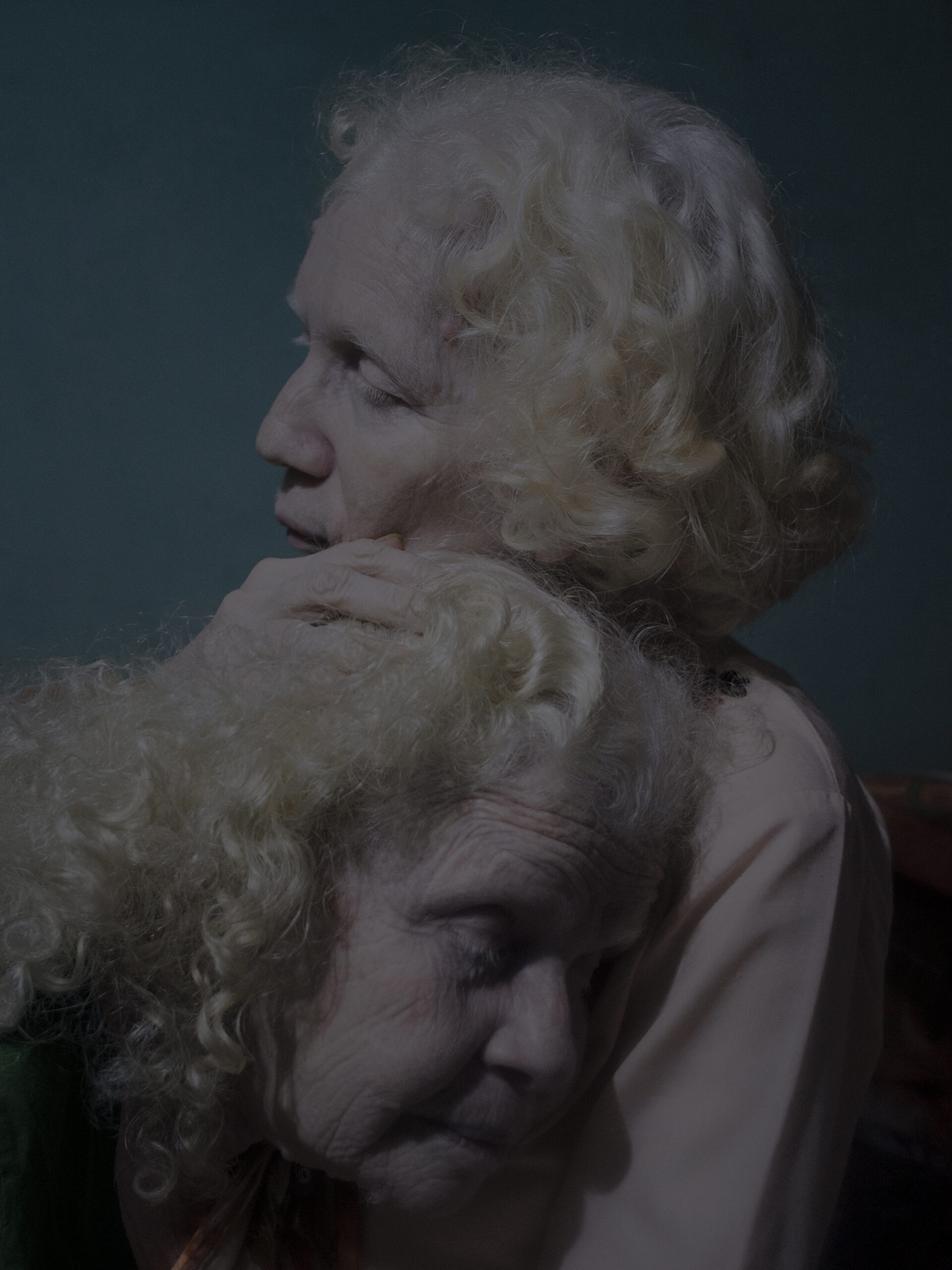
The two women in these images have withdrawn from the world and the series is an attempt to get at a bit of the fact of their seclusion, but more emphatically, the quality of their seclusion.
The pictures are, without exception, touching. Soft color, gentle compositions, the images are both melancholy and poignant.
The book begins with a metaphor—one of the two aunts looking out a door, peering from inside what I assume is their home to the outside world. The rest of the images, whether it be interior shots, looking into a mirror, using some knitting needles, reading a newspaper, or more formal poses, all achieve this deeper current. There is a gentle aspect of love in every one.
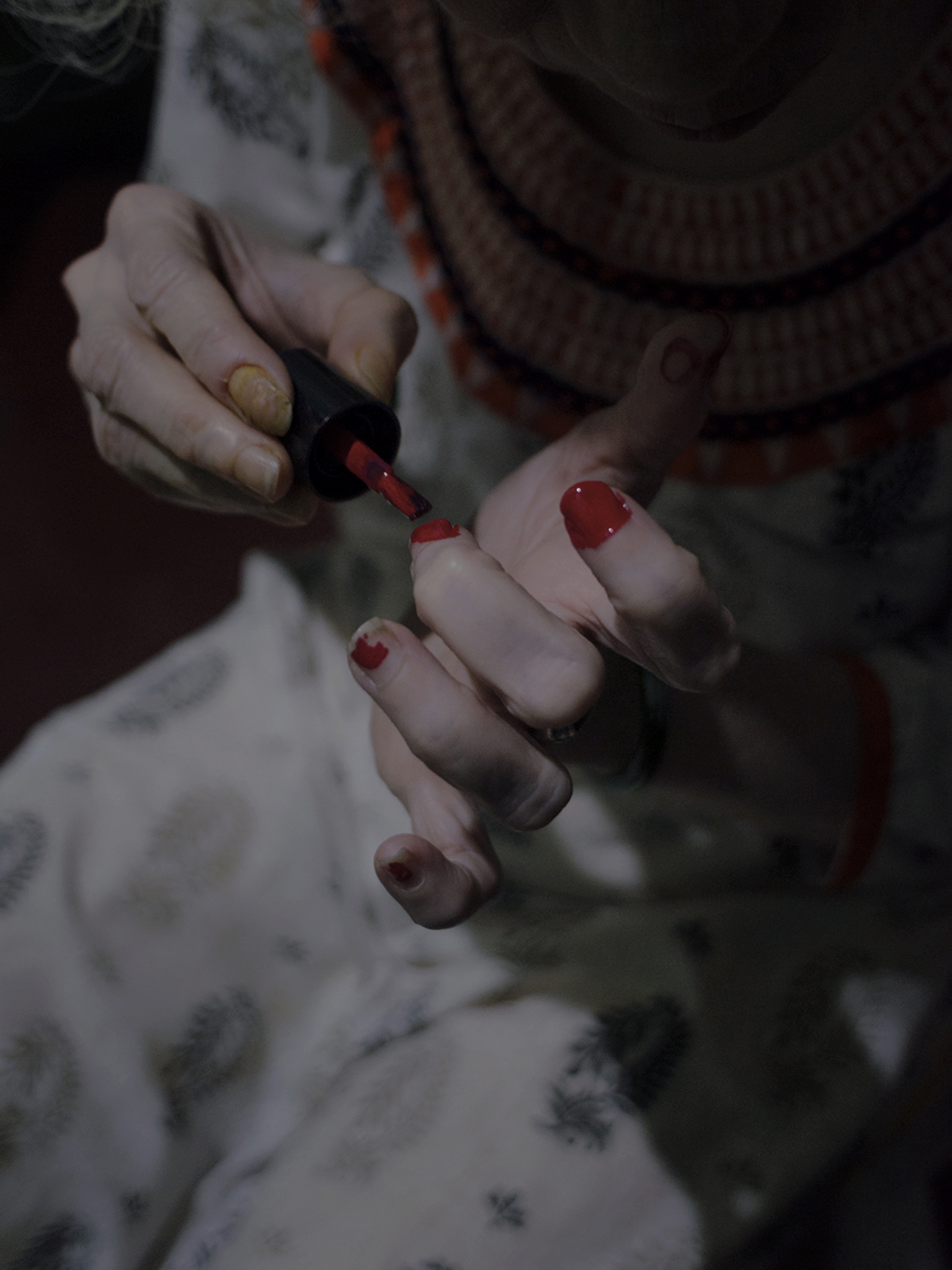
Some of the images, such as several toward the end, where the women are dancing on a beach or playing a violin at the seashore, are otherworldly and moving, transcending their isolation and ostracization and revealing a sense of joy. Interior shots the two women holding each other, or sitting at a table looking off into the distance, invite contemplation.
Actually, admiration might be a more accurate response. Debsuddha is a remarkable photographer—with a fine eye toward intimate detail, balance, composition and light. With the more posed images there is an atmosphere of sorrow as well as integrity, and the candids reveal energy and humor.
While the book does not have the kind of narrative arc that would take us through a day or a week or a season, it nonetheless dives deep into these women’s lives. There are details from Indian culture—such as the use of red alta on the feet, a symbol of beauty and femininity among other things—which connect the women with the communities they have withdrawn from, and give depth to the collection.
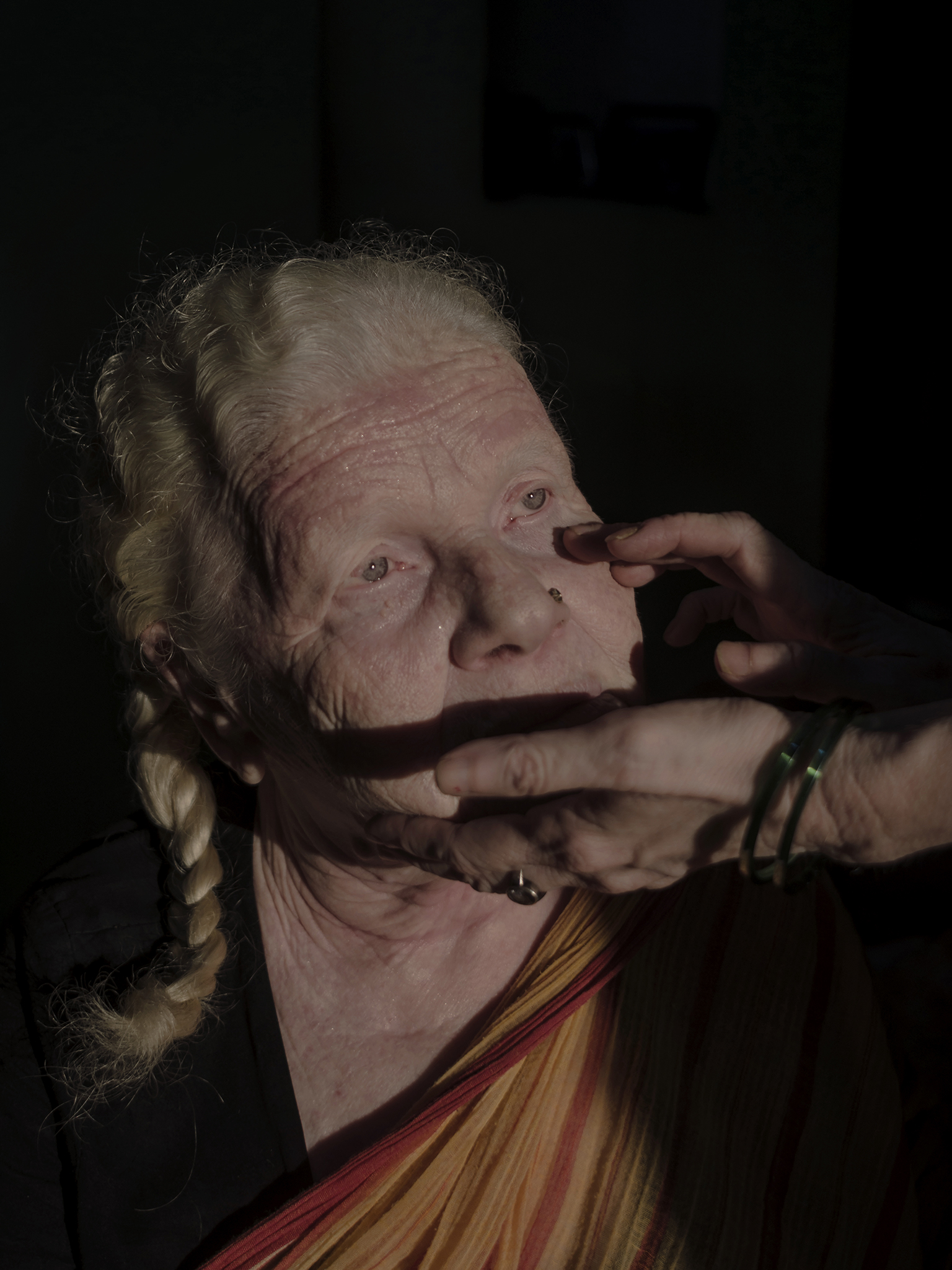
The women in these images are old. There are two images in the book, not by Debsuddha, which show the women first as toddlers and then again as teenagers or twenty-somethings, which frame the rest of the collection brilliantly.
Crossroads is not a requiem. It is a definition. I keep coming back to two terms: integrity and love.
I do not know these women. I do not live in India. I understand very little about the currents of Indian culture. But frankly, that doesn’t matter. There is something universal about separation due to difference and these images make that connection present.
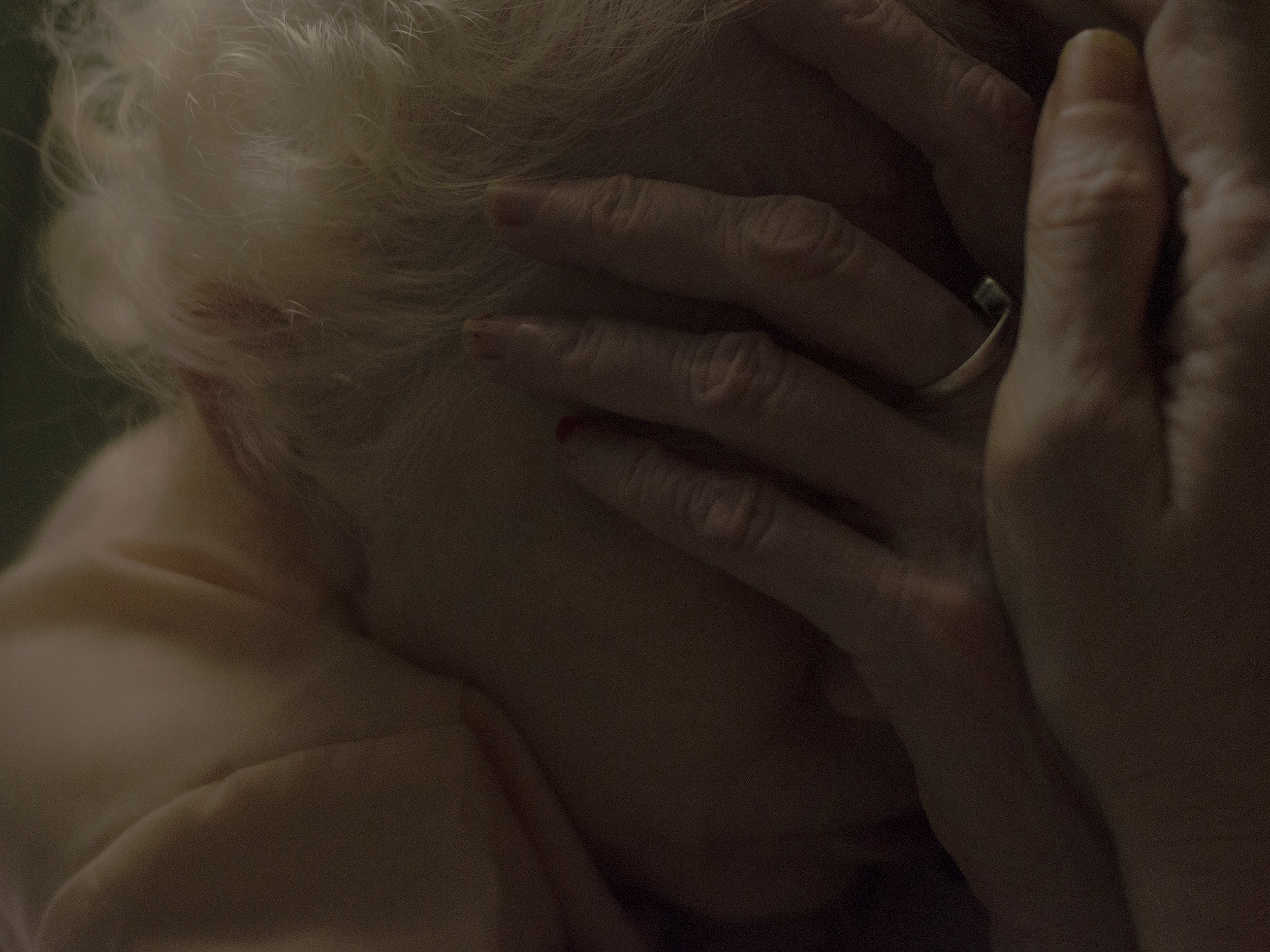
Crossroads includes a poem, an image of handwriting set on special paper in the middle of the book (and then again in typeface at the end), which includes this stanza:
Oh my crossroad! Thou art
Embracing me in all parts of my life.
I welcome thee.
Therein, perhaps, lies the magic. These women are at a crossroads because of their age. They have been at a crossroad their entire lives because of their genetic situation. They’re at a crossroad between the outside world and the internal refuge. Every breath of every day is a crossroad, and it is welcomed. These images make that feeling seen.
A final note. Part of the design of the title on the book cover is a “dir” symbol. A bit of explanation at the very end reads— “The “dir,” or ligatures, are graphic symbols used to indicate that a musician must play two or more notes in a single continuous gesture, thus creating an effect of fluidity.”
Exactly.
A note from FRAMES: Please let us know if you have an upcoming or recently published photography book.

